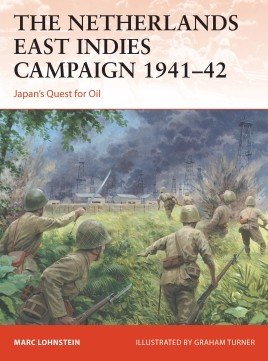JAPAN’S QUEST FOR OIL
CAMPAIGN 364
Auteur: Marc Lohnstein
Short code: CAM 364
Uitgever: Ospreypublishing
Flaptekst
At the end of 1941, Imperial Japan targeted The East Indies in an attempt to secure access to precious oil resources. The Netherlands East Indies Campaign featured complex Japanese and Allied operations, and included the first use of airborne troops in the war. This highly illustrated study is one of the less well-known campaigns of the Pacific War.
Imperial Japan’s campaigns of conquest in late 1941/early 1942 were launched in order to achieve self-sufficiency for the Japanese people, chiefly in the precious commodity of oil. The Netherlands (or Dutch) East Indies formed one of Japan’s primary targets, on account of its abundant rubber plantations and oilfields.
The Japanese despatched an enormous naval task force to support the amphibious landings over the vast terrain of the Netherlands East Indies. The combined-arms offensive was divided into three groups: western, centre and eastern. The isolated airfields and oilfields were, however, picked off one by one by the Japanese, in the rush to secure the major islands before major Allied reinforcements arrived.
This superbly illustrated title describes the operational plans and conduct of the fighting by the major parties involved, and assesses the performance of the opposing forces on the battlefield, bringing to life an often-overlooked campaign of the Pacific War.

Het is niet mogelijk om een reactie te plaatsen